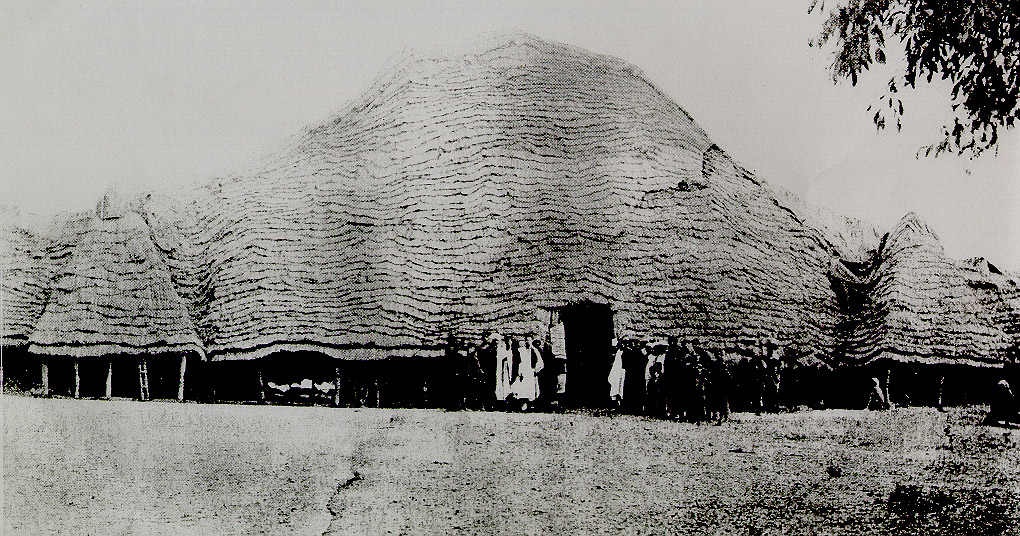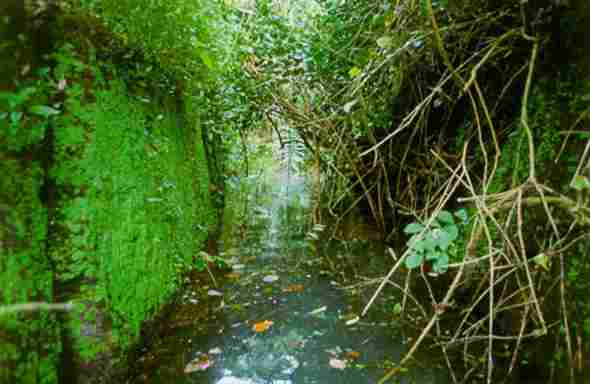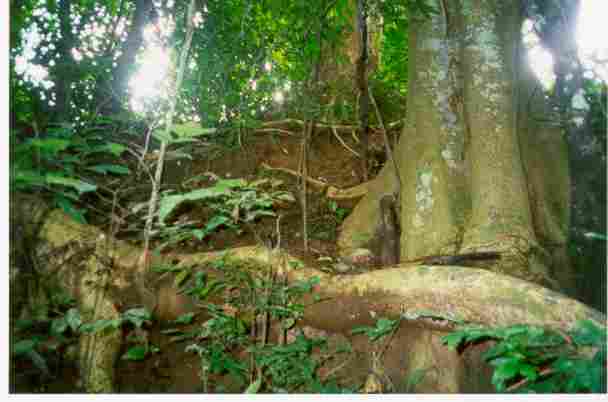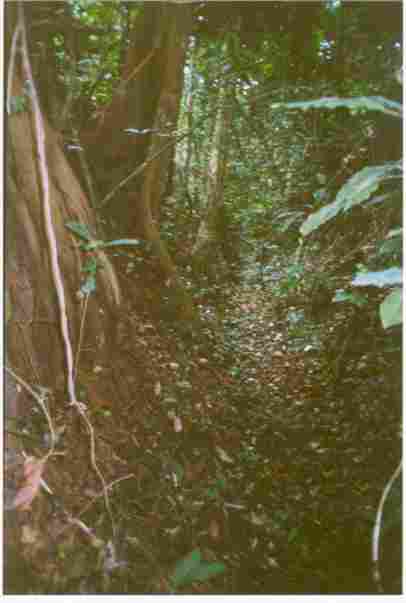|
 |
|
|
Abeokuta palace in 1946, showing royal ridged thatch patterns.
Old Owu people settled here and founded Abeokuta around Olomu rock after
their conquest in about 1827. |
|
|
 |
|
|
Old Owu was the earliest forest kingdom to be
founded from Ife over a thousand years ago. It grew to be a powerful forest
kingdom able even to humble Old Oyo. Old Owu's 15km long inner ditch was
dug two to four metres deep, here cutting for 500 metres through hard laterite
to create a deep rainy season moat.
A cross
section of this ditch
|
|
|

|
|
|
Olomu rock in 1946: note the thatch on ordinary houses compared
to the palace.
|
|
|
 |
|
|
Along the inner and outer ditch sides of the
walls of Old Owu (Owu Orile) silk-cotton trees (Ceiba pentandra)
were planted at regular intervals of about 150 metres, though they were
also planted in groups. These trees were used as boundary markers in other
areas of West Africa; and their fluffy kapok was used for cushions and
as tinder.
|
|
|

|
|
|
Tree roots helped stablize the ditch banks at
Orile Owu. The ditches owe their steep sides to the anomalouosly high clay
content in the Coastal Plains Sands, resulting from windblown silt and
clay deposition from the Sahara.
|
|
|
 |
|
|
Saw cuts into a felled palm tree and timber
off-cuts betray the activities of those destroying these ancient ditches
natural defences. Old Owu's ditches and those of Sungbo's Eredo are some
of Africa's largest ancient monuments but they have not yet been made into
National Monuments; and there are problems with the predatory activities
of Indian, Chinese, Italian and British timber merchants carrying out illegal
exports. It remains to be seen whether Nigeria's local communities and
paramount chiefs will take action instead.
A provisional map of Old Owu's large earthwork
enclosures is available from:
African Legacy explore@africanlegacy.info
Fuller details can be obtained from:
Dr Ogundele,
Department of Archaeology,
University of Ibadan, Nigeria.
|
|





